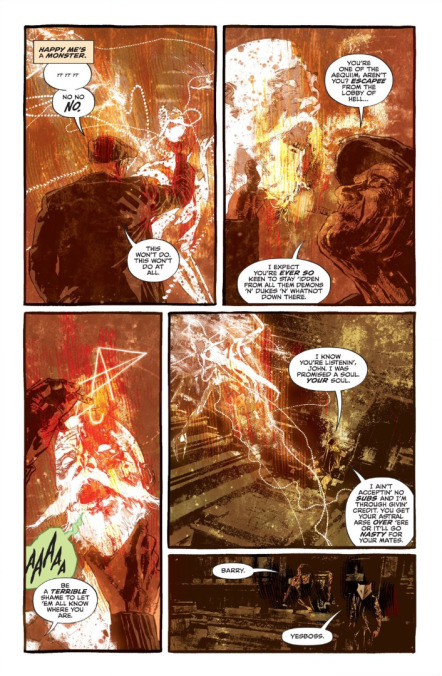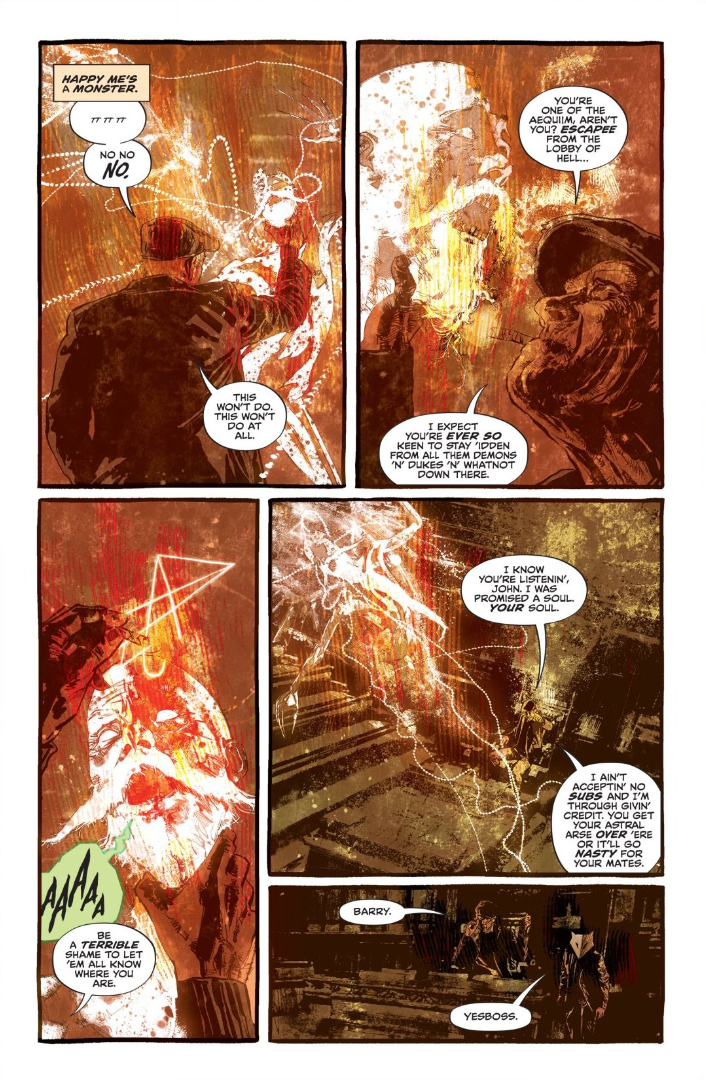Hellblazer #12 is a master class in high-stakes storytelling

Some fans pick up books solely for the characters or creators they love, or a story they find promising, while others follow artists and art styles with the same enjoyment. The most recent Hellblazer book, which wrapped last week after 12 issues, is one of the titles that could easily draw from both groups, offering up stunningly adventurous art and a magnificently crafted story—both of which rely on the other to be fully complete. Writer Simon Spurrier’s take on the character is just as caustic and fundamentally cracked as he needs to be, but the book would have been very different without artists Aaron Campbell’s and Matias Bergara’s work.
Hellblazer #12 is a double-sized issue that Campbell and colorist Jordie Bellaire deliver with panache. Campbell’s style is thick with black, rough and chaotic, and Bellaire drenches it with blues. There are acidic yellow-greens and furious reds accenting the painful culminating scenes of this final issue, and the whole thing feels almost radioactive. Constantine is grappling with some profound trauma, both his own and what he’s inflicted on others, and the pain comes through in achingly raw art depicting John stretched past his limits physically, mentally, and emotionally.
Spurrier’s John is profoundly British, a disgruntled and broken man addicted to a wide variety of vices, but not so much so that readers can’t find something worth sympathizing with. Issue #12 is the culmination of a lot of very careful work, walking a fine line between the conflicting needs of servicing deep canon and appealing to new readers, with the book’s tension caused by themes that are both deeply personal to Constantine and traumatic on a larger cultural level. The team does all this gracefully, while stripping both John and our shared world down to component parts for a necessary dissection.
The intense Britishness of this run roots it in a particular time and place, which Spurrier leverages to build on ideas of toxic pride and the power of belief. John isn’t spared from any of this analysis, though; as usual, he likes to think himself above it all. He’s faced with avatars of both pure magic and intense xenophobic hatred, and this final issue forces him to more specifically acknowledge his role in all of it. It’s a masterful and deliberate piece of storytelling.
Sadly, Hellblazer was canceled short of the full anticipated run, but despite that, Spurrier, Campbell, Bergara, and Bellaire (as well as letterer Aditya Bidikar and cover artist John Paul Leon) have given readers something really special. Constantine’s legacy of chaos and pain is an important one to explore, and framing it in the context of Britain’s legacy of colonialism and hate is powerful. Bellaire’s colors—shifting from pastel watercolors on Bergara’s work to the intense contrast of Campbell’s—is an amazing demonstration of the important role colorists play on every book. Constantine has a deep backstory and rich history, and longtime fans will find a lot to enjoy in this run, but it’s also easily accessible for new readers. With self-contained arcs within a couple issues but a rich overarching plot that spans the whole run, Hellblazer is an excellent introductory book for readers who aren’t comics-literate. In the crown of jewels that make up the Sandman Universe titles, it’s a remarkable central gem. Fans of this book should definitely check out the rest of the Sandman Universe, as well as Spurrier and Bergara’s book Coda.
